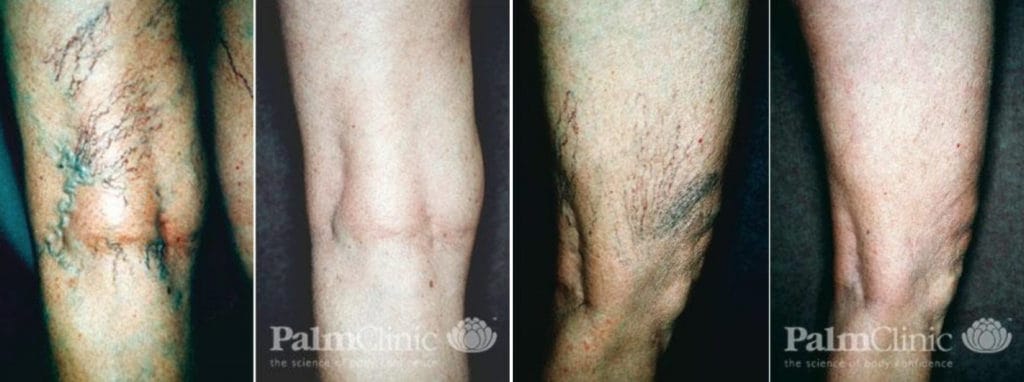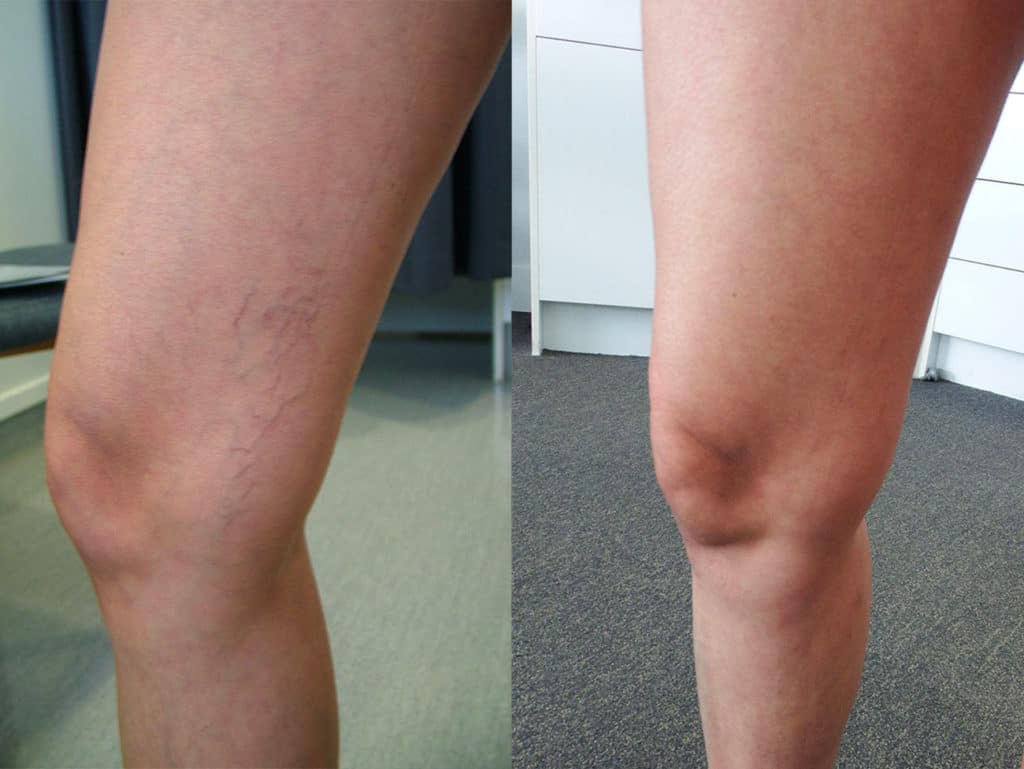Broken Veins on Thighs
If you’ve developed broken veins on thighs you probably have some questions about why the broken veins have occurred and how to get rid of them. Below we answer the most common questions about broken veins.
If you’re interested in treating your broken veins, please contact our reception team to book a consultation.
- What are broken veins on thighs?
- What causes broken veins on thighs?
- Are spider veins a sign of an underlying health problem?
- Do spider veins need to be treated?
- Will broken veins on thighs go away by themselves or only through broken vein treatment?
- How can I prevent broken veins on thighs from worsening?
- What are the available treatment options for broken veins on thighs?
- How long does it take to see results from spider vein treatment?
- Are there any natural or home remedies that can help reduce the appearance of spider veins?
- What lifestyle changes should I make to avoid or reduce spider veins causes?
- How much do broken vein treatments cost, and are they covered by insurance?

1. What are broken veins on thighs?
Broken veins (also referred to as spider veins) are small thread-like veins that appear as flat or slightly raised lines on the leg. They can be blue, purple or red. They are usually painless but can sometimes be uncomfortable or itchy.
2. What causes broken veins on thighs?
Broken vein causes are to do with venous insufficiency. This is when veins become weak or damaged causing blood to pool within them. The pooling causes broken veins to occur and may also cause varicose veins.
Factors that contribute to broken vein causes include pregnancy, obesity and spending a lot of time on your feet. Broken veins on thighs tend to be more common in women and they can appear worse after sitting or standing for a long time.
90% of people with broken veins have a family history of broken veins.
3. Are spider veins a sign of an underlying health problem?
Spider vein causes are to do with venous insufficiency, which is an underlying condition of weakened or damaged veins. Venous insufficiency in some people will not cause any discomfort, but for others it can make their legs feel tired, heavy or achy and can cause varicose veins.

4. Do spider veins need to be treated?
Spider vein treatment is usually done for cosmetic reasons, however if your legs are feeling tired, heavy or achy you may also have varicose veins or underlying venous incompetence and may want to look into varicose vein treatment.
5. Will broken veins on thighs go away by themselves or only through broken vein treatment?
Broken vein treatment is the only way to reduce the appearance of broken veins on thighs.
6. How can I prevent broken veins on thighs from worsening?
Wearing compression tights can help to prevent broken veins on thighs from worsening as can broken vein treatment.
7. What are the available treatment options for broken veins on thighs?
Broken veins on thighs can be removed quickly and effectively without surgery or time away from work. At Palm Clinic we have 25 years’ experience with broken vein treatment. Today’s leading treatment options for broken veins on thighs are Microsclerotherapy (an injection treatment) and/or Exotherme Laser.
8. How long does it take to see results from spider vein treatment?
Microsclerotherapy is usually delivered over two to three treatments and takes around eight weeks to see the full results.
Exotherme Laser requires at least three treatments and also takes a few weeks to see the full results.
9. Are there any natural or home remedies that can help reduce the appearance of spider veins?
Make-up can be used to cover broken veins on thighs but there are unfortunately no reliable natural remedies for broken veins.
10. What lifestyle changes should I make to avoid or reduce spider veins causes?
Preventing spider veins can’t be guaranteed but the below tips can help:
- Maintaining a healthy weight
- Getting regular exercise
- Avoiding strenuous exercise
- Avoiding long periods of standing up
- Wearing compression stockings
- Avoiding wearing high heels regularly
11. How much do broken vein treatments cost, and are they covered by insurance?
Before broken vein treatment can take place you must first have a consultation which costs $210. During your consultation your doctor will advise you on which spider vein treatment will be most effective for you.
Microsclerotherapy costs $630 per session. The cost of Exotherme Laser will be advised during your consultation.
If you are having treatment for cosmetic reasons it will not be covered by insurance however if your treatment is due to pain or discomfort, treatment of the underlying issue may be covered by insurance. Treatment of spider veins however is never covered by insurance. You can read more about this here.
If you would like to discuss spider vein treatment further, please call our reception team on 0800 4 PALM CLINIC or 09 522 8128 or email [email protected]



